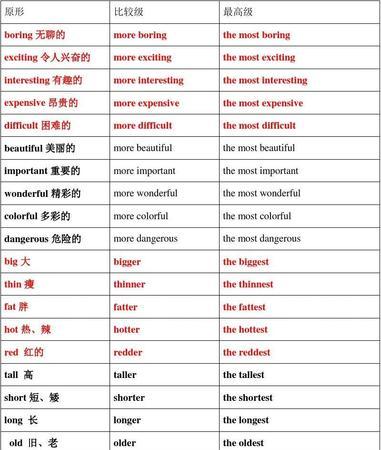英语中形容词后面的形式取决于描述的名词状况、状态或所属关系。动词后接-ing形式构成现在分词短语,用于描述名词的状况或状态时,使用-ed形式构成过去分词短语,描述名词的归属或所属关系时,使用-to形式构成表语从句。

加-ing形式
当形容词后面跟着一个动词时,我们通常使用-ing形式来构成一个现在分词短语。例如:
- He is an interesting person.(他是一个有趣的人。)
- The movie was really boring.(这部电影真的很无聊。)
- She is always surprising us with her talent.(她总是用她的才华给我们带来惊喜。)
加-ed形式
当形容词用于描述对名词的状况或状态时,我们通常使用-ed形式来构成一个过去分词短语。例如:
- The broken vase was on the floor.(破碎的花瓶在地板上。)
- The tired old man sat on the bench.(疲惫不堪的老人坐在长凳上。)
- The excited children ran out of the classroom.(兴奋的孩子们跑出了教室。)
加-to形式
当形容词用于描述名词的归属或所属关系时,我们通常使用-to形式来构成一个表语从句。例如:
- The book belongs to me.(这本书属于我。)
- The responsibility falls to him.(责任落在他身上。)
- The credit goes to the team.(功劳归于团队。)

